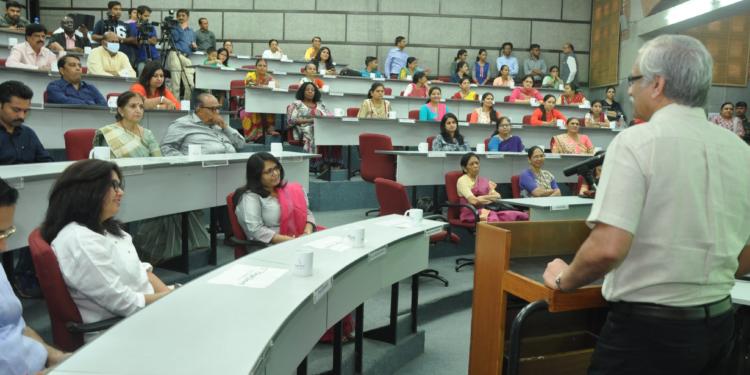
Saquib Salim
Indian Muslims, since independence, have remained on the margins of the education system. It is a common experience that a large number of the Indian Muslims drop out of schools and never enter a college. Sachar Committee Report, in 2006, confirmed this experience and showed a huge gap between Muslims and other social-religious groups in terms of education. The demands for affirmative actions for Muslims were raised. The Government was asked to adopt measures to uplift the community educationally.
Government policies largely determine the education any group of population would receive. Key factors like - location of educational institutions, financial assistance for education, and accessibility to other resources, determine the spread of education among any particular group of population. Therefore, Muslim groups blamed the government and political parties which ruled the country since independence for the backwardness of Indian Muslims. Since then, measures were adopted and carried forward by a regime which is often ‘alleged’ to have an anti-Muslim bias.
Since 2012, All India Survey for Higher Education (AISHE) has been conducted annually. The survey collects data from all the Universities, Colleges and standalone institutions of the country. In 2020, the survey included 1043 universities, 42343 colleges, and 11779 standalone institutions. A total of 3 crore and 85 lakh students are enrolled in the courses which are pursued after the senior secondary examination, i.e., under-graduation, post-graduation, PhDs, diplomas etc. Out of these, only 21 lakh belonged to Muslim community, which is 5.5% of the total enrolments. With approximately 14% proportion in population the share in enrolments in higher education is rather low. However, this proportion shows a steady rise since 2013 when 12.5 lakh Muslims (or, 4.2% of the total enrolments) were enrolled in Higher Education.
(Table 1)
| Year | Percentage in Students | Percentage in Teaching Staff | |
| 2012-13 | 4.20% | 2.90% | |
| 2014-15 | 4.50% | 3.20% | |
| 2016-17 | 4.90% | 4.90% | |
| 2017-18 | 5% | 5.30% | |
| 2018-19 | 5.23% | 5.40% | |
| 2019-20 | 5.50% | 5.60% |
When we study the survey published in 2020 in contrast with the first one published in 2013 the growth among Muslims is clear.
During the first survey conducted in 2012-13, 4.20% of the total students enrolled in Higher Education in India were Muslims which rose to 5.00% in 2017-18 and now stands at 5.5%. Almost every state in the country has also shown a positive growth in terms of the enrollment of Muslims. In Gujarat, the Muslim proportion in Higher Education rose from 1.83% to 2.85% during the last seven years. It is a 83.94% increase in enrollments against the 16.95% increase among the non-Muslims in the state. Similarly, Uttar Pradesh witnessed a 75.32% rise in Muslim enrollments against 34.99% increase in enrollments of others. Whereas, West Bengal seems to be catching up slowly where the proportion of Muslims in Higher Education rose from 10.00% to 10.85% during the same period.
(Table 2)
| State/ UT | Percentage of Muslim Students in 2012-13 | Percentage of Muslim Students in 2019-20 |
| Andaman & Nicobar | 1.93% | 4.64% |
| Andhra Pradesh | 2.44% | 3.23% |
| Arunachal Pradesh | 0.19% | 0.26% |
| Assam | 8.38% | 14.35% |
| Bihar | 7.74% | 9.43% |
| Chandigarh | 0.17% | 0.64% |
| Chattisgarh | 0.77% | 0.92% |
| Dadra & Nagar Haveli | 0.96% | 1.20% |
| Daman & Diu | 3.03% | 3.92% |
| Delhi | 1.50% | 2.34% |
| Goa | 2.85% | 5.18% |
| Gujarat | 1.83% | 2.85% |
| Haryana | 0.79% | 1.38% |
| Himachal Pradesh | 0.28% | 0.61% |
| Jammu & Kashmir | 36.14% | 45.19% |
| Jharkhand | 5.35% | 5.33% |
| Karnataka | 4.61% | 6.61% |
| Kerala | 10.85% | 14.59% |
| Lakshdweep | --- | 58.21% |
| Madhya Pradesh | 2.03% | 2.03% |
| Maharashtra | 2.49% | 3.90% |
| Manipur | 2.50% | 5.20% |
| Meghalaya | 1.07% | 2.37% |
| Mizoram | 0.05% | 0.21% |
| Nagaland | 0.39% | 0.48% |
| Odisha | 0.94% | 0.99% |
| Puducherry | 2.63% | 3.90% |
| Punjab | 0.52% | 1.59% |
| Rajasthan | 1.47% | 2.00% |
| Sikkim | 0.52% | 0.25% |
| Tamil Nadu | 2.64% | 3.68% |
| Telangana | 6.48% | 8.77% |
| Tripura | 3.39% | 2.45% |
| Uttar Pradesh | 4.37% | 5.60% |
| Uttarkhand | 1.19% | 3.11% |
| West Bengal | 10.00% | 10.89% |
Enrollment and getting degrees are not enough, one should be able to get employment accordingly. In 2012-13, only 2.9% of the teaching staff, or 38,388 teachers, were found to be Muslims. The proportion has now increased to 5.6%, or 83,494. This is a 117% increase among the teaching staff at the higher education level in India. The trend is healthy for the educationally most backward community in the country.
Even though there is a positive rise the proportion of Muslims in higher education is much below their proportion in population in each state. The direction the government is taking needs to be accelerated to bring the community at parity with other social-religious groups in order to develop the nation.
Saquib Salim is a historian and a writer
